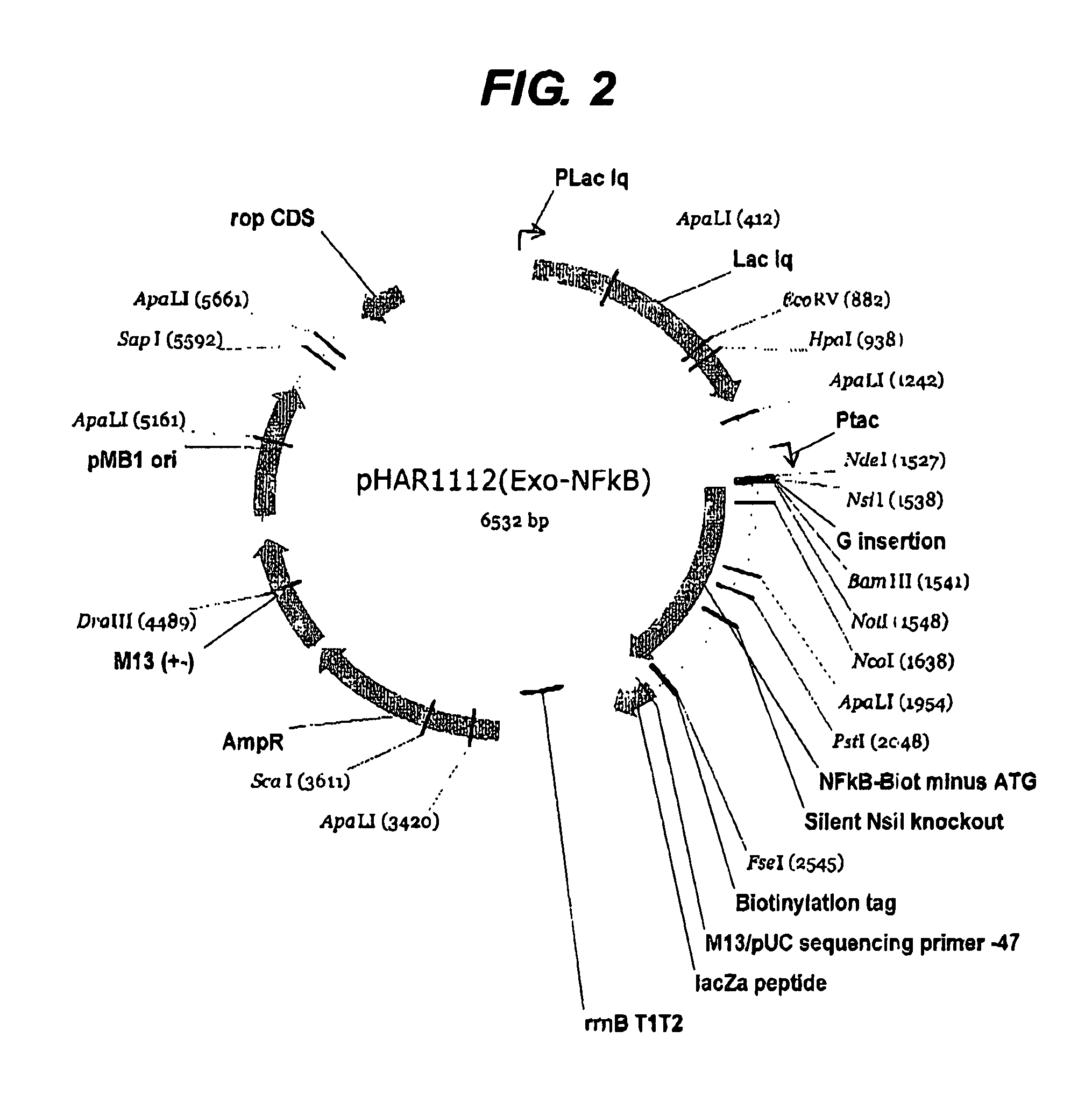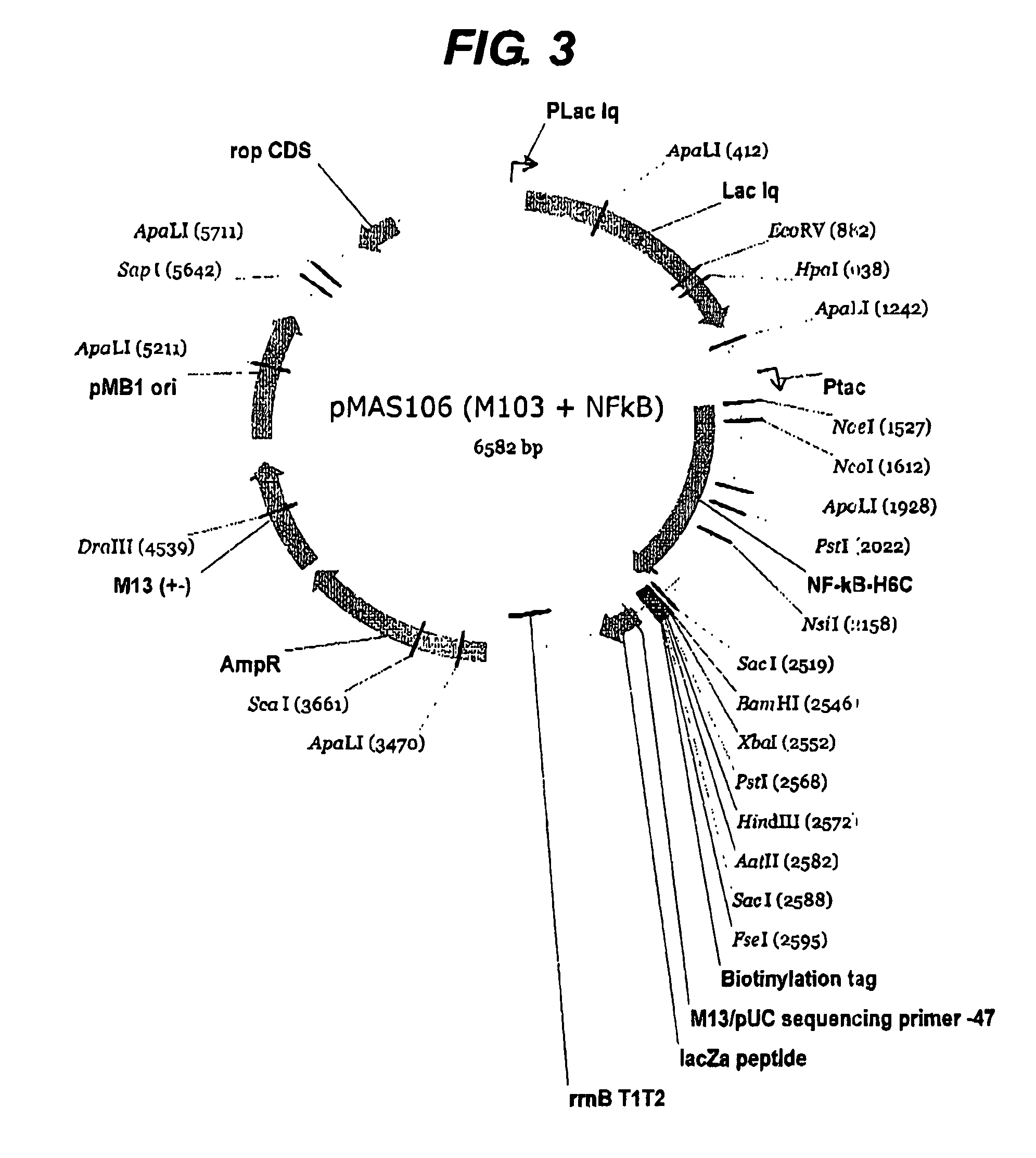Method for determining protein solubility
a solubility and protein technology, applied in the field of solubility determination of proteins, can solve the problems of negative and unmodified phenotype, and achieve the effects of increasing solubility, accelerating the process, and optimising the solubility of a candidate protein
- Summary
- Abstract
- Description
- Claims
- Application Information
AI Technical Summary
Benefits of technology
Problems solved by technology
Method used
Image
Examples
Embodiment Construction
Employing a Protein of Known Structure for Validation Purposes
[0226]The first example shown above in detail was of a previously intractable protein since it was not possible to express the protein prior to this work. However it was also considered necessary to perform the same process on a protein of known structure in order to validate the method further. The protein NF-kappa B was chosen since it has a well-defined domain structure. Two libraries were constructed using pHAR1112 for N-terminal truncation (FIG. 2) and pMAS106 (FIG. 3) for C-terminal truncation. The libraries were constructed as for the example above with the exception that pMAS106 was digested with FseI and XbaI prior to the exonuclease truncation step.
[0227]The quality of the C-terminal truncation library from pMAS106 was measured by PCR of the gene fragment inserts with flanking primers as above and the results are shown in FIG. 6. The array of colonies was analysed using the fluorescent method with Alexa488-strep...
PUM
| Property | Measurement | Unit |
|---|---|---|
| time points | aaaaa | aaaaa |
| volume | aaaaa | aaaaa |
| volume | aaaaa | aaaaa |
Abstract
Description
Claims
Application Information
 Login to View More
Login to View More - R&D
- Intellectual Property
- Life Sciences
- Materials
- Tech Scout
- Unparalleled Data Quality
- Higher Quality Content
- 60% Fewer Hallucinations
Browse by: Latest US Patents, China's latest patents, Technical Efficacy Thesaurus, Application Domain, Technology Topic, Popular Technical Reports.
© 2025 PatSnap. All rights reserved.Legal|Privacy policy|Modern Slavery Act Transparency Statement|Sitemap|About US| Contact US: help@patsnap.com



